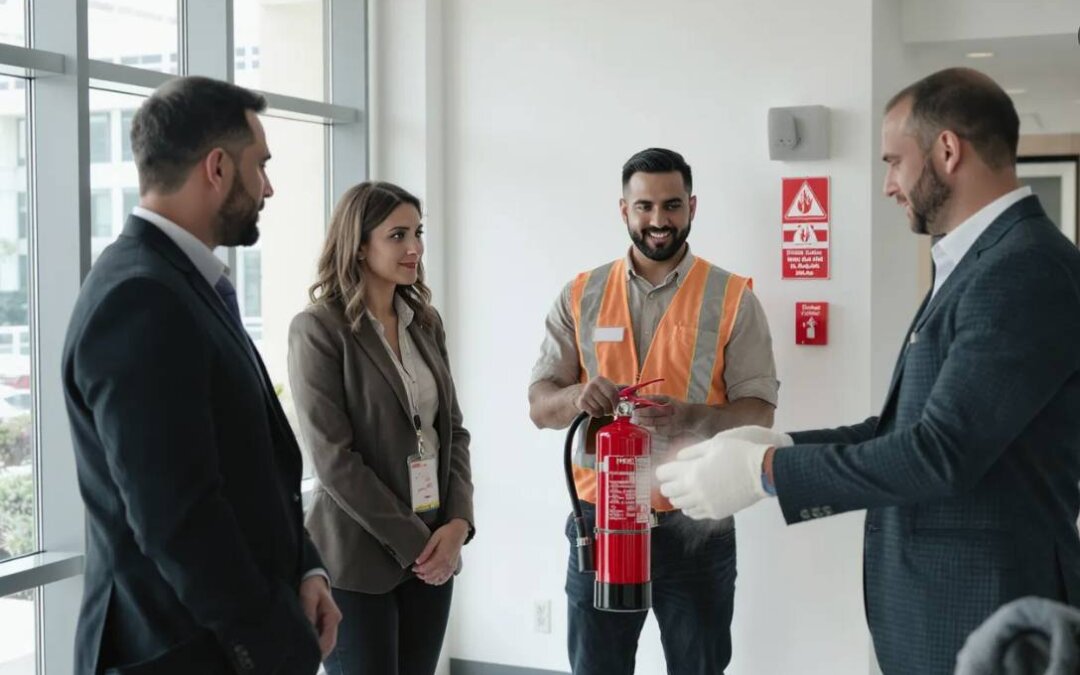Fire safety training isn’t just a box to tick for compliance — it’s a critical investment in protecting lives, property, and business continuity. Whether you manage a large commercial facility, a small business, or even your own home, understanding fire preparedness and knowing how to respond in an emergency can make all the difference.
In this guide, we’ll explore why fire safety training is essential, how it integrates with broader fire services, and the steps you can take to ensure your team or household is ready for anything.
Understanding Fire Safety Training
Fire safety training equips individuals with the knowledge and skills to respond effectively during a fire emergency. This includes understanding how fires start, how they spread, and the correct use of fire safety equipment.
Investing in regular fire safety training is one of the most cost-effective ways to reduce fire risk and protect people.
Training typically covers:
- Identifying potential fire hazards
- Proper use of fire extinguishers and emergency lighting
- Evacuation procedures and assembly points
- Basic first aid for fire-related injuries
Training Component | Purpose | Benefit |
|---|---|---|
| Hazard Identification | Recognize risks | Prevent incidents |
| Equipment Use | Operate safely | Reduce damage |
| Evacuation Procedures | Move people quickly | Save lives |
As shown above, each training component serves a clear purpose in the overall preparedness plan.
The Role of Fire Preparedness in Business Operations
Fire preparedness goes beyond having a fire extinguisher or an alarm system installed. It means having a strategic plan that encompasses prevention, detection, and response.
For businesses, this includes:
- Regular fire drills to practice evacuation
- Maintaining clear escape routes and signage
- Ensuring fire alarm systems and emergency lighting are tested and functional
By integrating fire preparedness into daily operations, businesses can minimize downtime, protect assets, and meet regulatory requirements. According to the UK Home Office, effective preparedness can reduce fire-related losses by up to 40%.
How Fire Services Support Your Safety Goals
Professional fire services play a vital role in both prevention and response. They offer expert installation and maintenance of fire alarm systems, emergency lighting, and suppression systems.
These services also include:
- Compliance audits to ensure adherence to local fire regulations
- Tailored training programs for specific industries
- Rapid response support in emergencies
Partnering with qualified fire services ensures your systems and people are always ready for the unexpected.
When choosing a fire service provider, look for accreditations, customer testimonials, and a proven track record of compliance support.
Case Studies: Fire Safety Training in Action
Let’s look at how training has made a difference:
Business | Challenge | Outcome |
|---|---|---|
| Retail Chain | Frequent false alarms | Reduced incidents by 70% |
| Manufacturing Plant | Complex evacuation routes | Evacuation time cut in half |
| Office Complex | Low staff awareness | Full compliance within 3 months |
In each case, implementing structured fire safety training led to measurable improvements in safety and operational efficiency.
Common Mistakes to Avoid in Fire Preparedness
Even well-intentioned safety programs can fall short if they overlook key elements:
- Failing to update training regularly
- Neglecting maintenance of fire systems
- Assuming staff will ‘remember’ procedures without practice
Avoiding these pitfalls requires ongoing commitment and integration of fire safety into the organizational culture.
Industry Trends and Future Outlook
Fire safety technology is evolving rapidly. From smart fire alarm systems that integrate with building management software to advanced emergency lighting that guides occupants to safety, the future of fire preparedness is both smarter and more proactive.
Businesses should stay informed about these innovations to maintain a competitive and compliant safety posture.
Implementation Guide for Businesses
To get started with an effective fire safety program:
- Conduct a fire risk assessment
- Partner with accredited fire services
- Schedule regular training and drills
- Maintain and upgrade fire systems
- Review and update your fire safety plan annually
By following these steps, you’ll create a safer environment for staff, customers, and property.
Conclusion
Fire safety training is more than compliance — it’s a proactive strategy to protect what matters most. By integrating training with professional fire services and staying current with industry trends, businesses and homeowners can significantly reduce risk and enhance emergency response.
Start today by assessing your current preparedness level, engaging expert support, and committing to regular training. When it comes to fire safety, readiness is your most valuable asset.
For more information contact our friendly staff on 0300 303 2536

